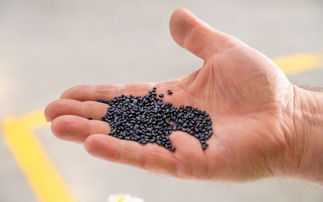Trend forecaster Cate Trotter offered delegates at the Shell Powering Progress Together Summit a glimpse of what life could be like for energy consumers in 2040
It's July 3rd 2040 in Manchester, it's raining, and the UK government is still negotiating Brexit. "Some things," notes trend forecaster Cate Trotter with a sigh, "don't change at all".
But other aspects of life in 2040 look radically different from today's world. Gone are mobile phones, for example, replaced with "thinking caps" users can don to fire off messages to friends, order cabs, or search the internet. City centre parks no longer have lawns - instead they are covered with a 50/50 mix of astroturf and bamboo. It costs just one pence to sequence your DNA. Ariane Grande is President of the United States.
Actually, that last detail perhaps does not seem so implausible.
This vision of the future is being presented by Trotter, founder of agency Insider Trends, to delegates at last week's Shell Powering Progress Together Summit. It is billed as a snapshot of life as an 'energy empowered' consumer in decades to come.
Trotter's vision follows a day in the life of Joan Bloggs, a 47 year old Manchester resident of medium build, medium height and medium brown hair. Bloggs, Trotter says, is "Miss Average", and it is through her it is possible to understand how the nascent, pioneering technologies of today could become tomorrow's taken for granted infrastructure.
Bloggs earns her keep as an 'AI coach', schooling artificially intelligent bots in ethical decision making. She can work when she wants, where she wants, and on July 3rd 2040 she does just that, picking up some work in the back of an autonomous one-person car while on the way to her local 'Pick Your Own World' centre, which sees vertical farming re-imagined as consumer entertainment.
En-route she stops at a motorway services to use the bathroom, but this rest stop isn't quite what you might expect. "In the past, everyone thought that this forecourt would be filled with cars charging themselves," Trotters says. "But actually now cars can charge themselves so quickly and in so many places, they don't actually need to spend much time on the forecourt. Instead these rest points are mostly used by humans and to store cars overnight."
Before she hops back into the car Bloggs spots a new energy source - a skyscraper acting as an energy storage device. It winches heavy concrete blocks to the top of the tower using solar power during the day, letting the blocks drop during the evening when energy is scarcer so as to release the stored energy. Other innovative energy generating technologies are also present, such as a public bus powered by human excrement from the service station toilets.
Trotter describes a world in which 3D-printing technology has gone mainstream, goods all come with a blockchain-enabled carbon offsets built into the price, and miniature energy-gathering devices come embedded in shoes for on-the-go device charging.
"All in all, life in 2040 is pretty darn awesome," she concludes.
Futurology is always as much art as science, and the only thing that can be certain is that the next two decades will not pan out precisely as Trotter or her future-gazing peers predict. But while her vision of life in two decades' time may seem fanciful, it is all powered by technology which exists today. Using suspended weights to store energy is being pioneered by UK start-up Gravitricity, for example, while the Bio-Bus really did run on human poo as it ferried passengers around Bristol in 2015. Blockchain company Poseidon is working on a system to connect carbon credits with specific purchases, partnering with ice-cream giant Ben & Jerry's for real world trials. Meanwhile, ultra-rapid EV chargers are already delivering an 80 per cent charge to cars in the UK in less than 10 minutes.
"We think that change happens in a linear fashion," Trotter argues. "We think that things get a little bit better each year... But actually as the world is digitising, the forces shaping our world don't follow this trajectory anymore."
According to Trotter, exponential change enabled by technology means we might be about to experience a century's worth of change in a little under 25 years. And although Joan Bloggs' life is at least as energy hungry as that of the average Manchester resident today, Trotter argues if it is powered by renewables it could still be compatible with global climate goals.
"If we can embrace this way of living, and we can encourage people elsewhere in the world to live in this way, the targets of the Paris Agreement will be within our sights," she says. "And actually, I think the main barrier between where we are now and making something like this take place is not in fact, the technology, it's our behaviour."
Trotter paints a vision of a world that, technologically at least, seems possible. But whether it is plausible - whether all this potential innovation will be harnessed to reduce emissions - is another question altogether. It is a question that demands rapid and unprecedented economy-wide reforms at a policy, infrastructure, investment, technological, and consumer level. "I think I wanted to show a future that completely is possible," Trotter admits. "But it's very challenging to get there."
The BusinessGreen Powering Progress Together Hub is supported by Shell. All the hub's content is editorially independent, unless stated otherwise.








